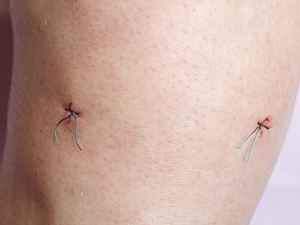Recent studies suggest middle-aged and older patients who undergo arthroscopic partial meniscectomy (APM) for a meniscal tear are more likely than patients treated nonoperatively to show early degeneration of cartilage, bone or synovium on imaging.
However, no research has ever assessed whether patients with the most damage have worse symptoms over a subsequent period of observation, irrespective of the treatment received.
By analyzing data from a previous randomized trial of APM, Jeffrey N. Katz, MD, MS, a physician in the Orthopaedic and Arthritis Center at Brigham and Women’s Hospital, Elena Losina, PhD, a researcher in the Department of Orthopaedic Surgery, and colleagues found that structural changes in the knee detected by imaging after APM are not clinically meaningful, at least during the first years of follow-up. They published their findings in Arthritis Care & Research. Additional Massachusetts General Hospital coauthors included Yuchiao Chang, PhD, Jamie Collins, PhD, Morgan Jones, MD, MPH, and Lindsey MacFarlane, MD, MPH.
Methods
As reported in The New England Journal of Medicine, METEOR was a randomized, controlled trial conducted at the Brigham and six other centers. 351 patients with knee pain, meniscal tear and osteoarthritic changes were randomly assigned to either APM and physical therapy, or physical therapy alone. All patients had imaging evidence (from radiographs or MRI) of damage to the cartilage or an osteophyte.
The 168 patients included in the current analyses had complete data on:
- Change in the Knee Injury and Osteoarthritis Outcome Score (KOOS) Pain scale from month 18 after APM to month 60. The team transformed KOOS to a 100-point scale and considered a change of 8–10 points to be clinically meaningful
- Change in the MRI cartilage surface area score from baseline to month 18 after APM. 14 subregions were rated using the MRI Osteoarthritis Knee Score
Primary Analysis
There was no clinically significant association between change in cartilage surface area score and change in KOOS Pain score (r = –0.12; P=0.028). Similarly, the mean change in KOOS Pain was similar among those with the greatest and the least amount of change in cartilage surface area score. The lack of relationship remained after:
- Stratification of patients by severity of change in cartilage surface area
- Adjustment for age, sex, body mass index, treatment arm, KOOS Pain score at 18 months, mental health status, and number of activity-limiting musculoskeletal areas at baseline
Secondary Analyses
There were no significant associations between changes in the KOOS Pain score and early changes (baseline to month 18) in other structural measures including cartilage thickness damage, osteophytes, bone marrow lesions, effusion-synovitis, or Hoffa-synovitis.
Patient Counseling
Patient Guidance
Physicians may wish to inform their patients that, compared with physical therapy alone, APM has been associated in some research with greater MRI evidence of deterioration in certain parts of the knee joint. However, data from this randomized trial did not indicate that the structural changes are associated with worsening pain over a mean of 3.5 years of follow-up. Longer follow-up is necessary to exclude the possibility that structural damage leads to a return of pain and functional impairment.
